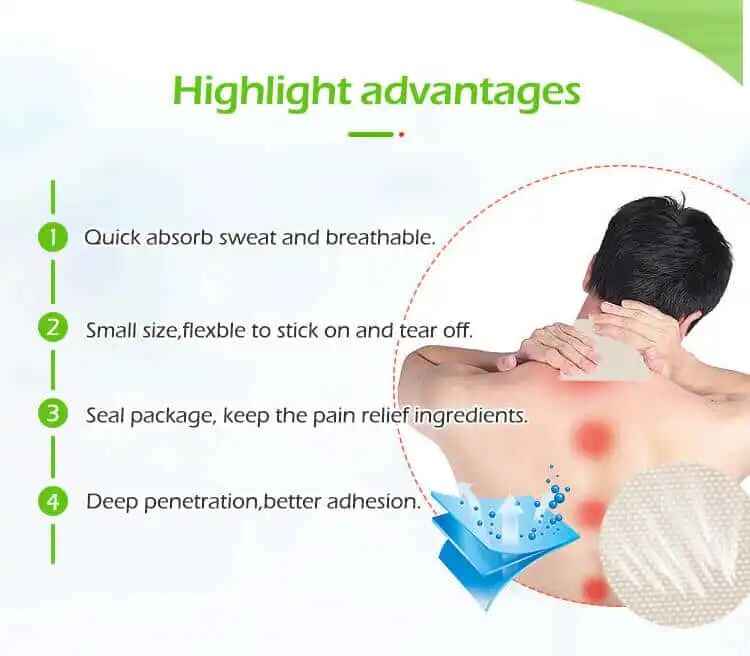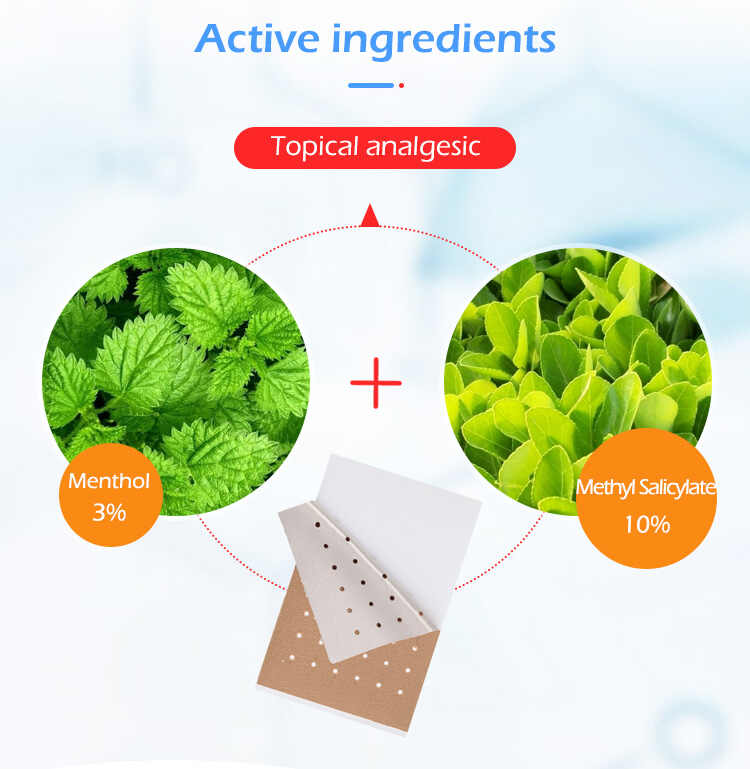How to Balance Functionality and Safety in Heat Therapy Patch OEM Products
In the fast-growing health and wellness industry, Heat Therapy Patches have become a preferred solution for relieving muscle pain, joint stiffness, and menstrual discomfort. However, as demand increases, so does the responsibility of ensuring that these products are both effective and safe. Whether you're a Heat Therapy Patch Manufacturer, a Heat Therapy Patch OEM, or a Private Label Heat Therapy Patch brand, balancing functionality with user safety is not just a regulatory requirement—it’s a strategic necessity for long-term success.
This comprehensive guide explores how Heat Therapy Patch OEMs can develop high-performing products without compromising on safety. We'll also cover best practices, key design considerations, and industry trends to help you make informed decisions in OEM partnerships.

1. The Importance of Balancing Functionality and Safety
Functionality refers to how well the Heat Therapy Patch delivers therapeutic benefits—consistent heat generation, duration, and adhesion to the skin. Safety, on the other hand, ensures that these benefits are delivered without causing burns, allergic reactions, or other health risks.
When designing or sourcing a Custom Heat Therapy Patch, it’s vital to consider:
Targeted heat delivery without skin irritation
Consistent temperature control
Non-toxic, hypoallergenic materials
Adherence to international safety standards
Failure to balance these can lead to product recalls, customer dissatisfaction, and damage to your brand's reputation.
2. Key Functional Requirements for Heat Therapy Patch OEM Products
To be effective, a Heat Therapy Patch OEM product should meet several performance benchmarks. These functionalities are what customers pay for—and expect—when choosing a heat therapy solution.
A. Consistent and Controlled Heat Output
A high-quality Heat Therapy Patch Manufacturer uses iron powder or carbon-based materials that, when activated, emit heat at a controlled temperature (typically between 40°C and 60°C). Too much heat can cause burns, while insufficient heat reduces therapeutic benefits.
Best Practice: Choose a Heat Therapy Patch Supplier that tests heat curves and provides temperature stability data for every batch.
B. Extended Heat Duration
Most consumers expect a patch to deliver warmth for 8 to 12 hours. Poor formulation can result in uneven heating or premature cooling.
Best Practice: Collaborate with your OEM partner to ensure the patch formulation is optimized for long-lasting performance, especially if developing a Custom Heat Therapy Patch.
C. Strong Yet Gentle Adhesion
The adhesive used should be skin-friendly and hold the patch in place without leaving residue or causing skin irritation.
Best Practice: Use medical-grade adhesives tested on sensitive skin types and validated through dermatological testing.
D. Flexible and Ergonomic Design
To suit body contours (e.g., neck, shoulders, abdomen), the patch must be ergonomically designed and comfortable during motion.
Best Practice: Work with an experienced Heat Therapy Patch OEM that offers design customization for different use-cases.
3. Critical Safety Considerations for OEM and Private Label Products
As a Private Label Heat Therapy Patch brand or OEM collaborator, you carry legal and ethical responsibility for product safety. The following elements should be strictly managed to avoid safety incidents.
A. Skin Compatibility and Allergy Testing
The materials used—adhesives, outer covers, and heating elements—must be hypoallergenic and free from harmful chemicals like phthalates or parabens.
Best Practice: Request third-party certifications such as ISO 10993 (biocompatibility) from your Heat Therapy Patch Manufacturer.
B. Temperature Regulation Mechanisms
Without proper temperature control, Heat Therapy Patches can cause first or second-degree burns, especially when used during sleep or over sensitive skin.
Best Practice: Insist on thermal testing reports, fail-safe formulations, and safety disclaimers on packaging from your OEM supplier.
C. Regulatory Compliance
OEM products must comply with safety standards across target markets:
FDA (U.S.)
CE Marking (Europe)
CFDA/NMPA (China)
ISO 13485 (Medical device manufacturing)
Best Practice: Partner with a Heat Therapy Patch OEM experienced in international compliance and documentation for global exports.
D. Packaging and Instructions
Clear, accurate usage guidelines reduce the risk of misuse. Safety information should include:
Duration limits
Temperature warnings
Contraindications (e.g., for diabetics, pregnant women)
Best Practice: Ensure your Private Label Heat Therapy Patch packaging is customized for legal and safe consumer use.
4. Customization Strategies: Meeting Unique Needs Without Compromising Safety
Customization is one of the top benefits of working with a Heat Therapy Patch OEM. However, it's easy to overlook safety while focusing on aesthetics or enhanced functionality.
Here’s how to get the best of both worlds:
A. Custom Heat Profiles
Some consumers prefer gentler warmth, while others may need intense heat for deep pain relief. Offering variable heat profiles can differentiate your brand.
Safety Tip: Ensure that each variation is tested for skin compatibility and temperature consistency.
B. Shape and Size Variations
Design patches for specific areas (e.g., lower back, joints, neck). While doing so, ensure the material flexibility and heat spread remain uniform.
Safety Tip: Conduct ergonomic testing with real users before launching customized shapes.
C. Branded Packaging and Instructions
With Private Label Heat Therapy Patches, design packaging that reflects your brand but also follows regulatory labeling standards.
Safety Tip: Include universal warning icons and multilingual instructions if distributing globally.
5. Collaborating with the Right Heat Therapy Patch Manufacturer
Balancing functionality and safety begins with selecting a Heat Therapy Patch Supplier who understands regulatory requirements and consumer needs.
What to look for in an OEM partner:
Proven track record with top health brands
In-house R&D and quality control
Certifications: ISO, CE, FDA, SGS
Willingness to provide lab reports and sample testing
Capacity to scale production without compromising quality
A strong OEM relationship ensures that your Custom Heat Therapy Patch innovations meet both performance expectations and strict safety standards.
6. Future Trends: Safe Innovation in Heat Therapy Patches
The future of Heat Therapy Patch OEM development lies in integrating smart safety features and sustainable materials:
Smart Heat Control: Sensors that auto-adjust temperature based on skin feedback
Eco-Friendly Components: Biodegradable adhesives and non-toxic heat materials
Wearable Tech Integration: Bluetooth connectivity for usage monitoring
Forward-thinking Heat Therapy Patch Manufacturers are already incorporating these features while staying compliant with health regulations.
Conclusion
Creating a Heat Therapy Patch that’s both highly functional and undeniably safe is not only possible—it’s expected in today’s market. Whether you’re developing a Custom Heat Therapy Patch or expanding a Private Label Heat Therapy Patch line, working with the right Heat Therapy Patch OEM partner can ensure compliance, innovation, and consumer trust.
Prioritize functionality without compromising safety, and you’ll establish your brand as a trusted name in the pain relief industry.
Related Questions and Short Answers
Q1: What makes a Heat Therapy Patch unsafe?
A1: Overheating, poor-quality adhesives, allergenic materials, and lack of proper usage instructions.
Q2: How can I test the safety of a Custom Heat Therapy Patch?
A2: Work with your OEM to obtain ISO 10993 biocompatibility tests, thermal performance reports, and dermatological safety certifications.
Q3: Are Private Label Heat Therapy Patches subject to regulations?
A3: Yes, they must meet the same regulatory standards as branded products, including FDA, CE, or ISO certifications.
Q4: Can I customize a Heat Therapy Patch and still keep it safe?
A4: Absolutely. With proper testing and OEM support, you can tailor heat intensity, shape, and packaging without compromising safety.
Q5: How do I choose a reliable Heat Therapy Patch Manufacturer?
A5: Look for experience, international certifications, strong R&D, compliance support, and the ability to customize while maintaining safety standards.






